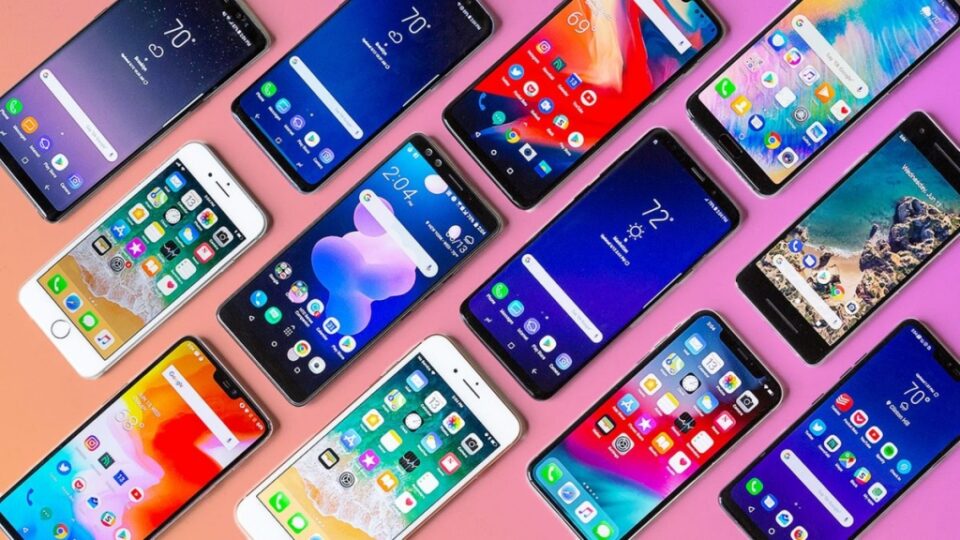India has been a hotbed for all types of smartphone manufacturers in the past, with the likes of Xiaomi, Oppo, Vivo and many more getting the Indian license. But now, the tables have turned. For the first time in the country’s history, the homegrown smartphone brand Vivo has broken through the $2,000 barrier with its new Vivo V9 Plus, making it the first smartphone in the country to do so. Apart from the sumptuous design, the Vivo V9 Plus comes with a powerful 6GB of RAM and 128GB of storage, which is a first in the sub $2,000 segment and is expected to make it a major contender in the mid-range smartphone segment. The India has been witnessing an unprecedented growth in the use of smartphones, and its set to continue in the future as well. A major factor propelling this growth is the ever-increasing affordability of smartphones. Smartphones are gradually becoming cheaper than feature phones.
The Xiaomi Redmi 6 Pro is the latest smartphone to be launched by the company, and it comes equipped with a 5.84-inch display. The device is powered by Snapdragon 632 SoC coupled with 3GB/4GB RAM and 32GB/64GB storage, which can be expanded via microSD card. The Redmi 6 Pro is fueled by a 3,350mAh battery that can be charged via a Type-C port on the bottom.
Gone are the days when you had to spend a lot of money to get a smartphone that works well. Thanks to the Pocophone F1, which completely changed the smartphone market. Before the Poco F1, it was widely thought that you had to choose a flagship phone to get good cameras, good performance and good design. But now you can get all this for less than Rs 25,000 in India. Do you have a strict budget of Rs 25,000 and want a smartphone you can rely on? Then you’ve come to the right place. In the sea of smartphones available in the market, it becomes difficult to find the right one for you. Therefore, we have compiled a list of the best smartphones under 25k in India. So, without further ado, let’s take a look at the list of best phones under Rs. 25,000, shall we? We update this list every week to bring you the latest and greatest phones in the Indian market. However, if you need help, we are available 24/7 on our YouTube, Facebook and Instagram channels.
These are the best phones under Rs 25000 you can buy today
1. Redmi Note 10 Pro Max

Xiaomi’s Redmi Note series has been a huge success worldwide thanks to its serious hardware at an affordable price. Xiaomi changed the game in the mid-range smartphone market with the release of the Redmi Note 3 and broke all sales records in the country after the release of the Note 4. Over the years, the Redmi Note series devices have been slightly modified with each generation. But this year, Xiaomi seems to have reversed the trend. The Redmi Note 10 Pro Max could be the biggest generational leap in years and the most expensive Note in the company’s portfolio. Unlike some OneMinus brands, Xiaomi was able to justify them in the end, despite the inflated prices. For starters, the device offers a 120Hz OLED screen, 108MP cameras and a Snapdragon 732G SoC processor. This year’s top-of-the-line Note uses the parent company’s new Evol display and has a much smoother and more ergonomic design. The biggest design changes are at the back. The focus is clearly on the camera (no pun intended). The camera field protrudes from the back of the camera. Despite the AMOLED screen, the device has a fingerprint on the side, built into the power button. In terms of performance, the Snapdragon 732G can easily handle any task you throw at it. But yes, MIUI with its pathetic RAM management hits the user experience hard. In terms of optics, the camera excels thanks to a 108MP sensor combined with an 8MP ultra-wide-angle sensor. There are two other lenses that are not worth discussing. The camera optimization of MIUI is good and allows you to capture beautiful landscapes and portraits. At the same time, the 5020 mAh battery can keep the device running all day long.
Reasons for purchase :
- Excellent reproduction with best-in-class outdoor visibility
- 120 Hz refresh rate
- The 108MP sensor ensures stunning results.
- Thanks to the optimization of MIUI, the battery does not discharge.
- IR blaster and 3.5mm headphone jack added
- On-board speakers are very good
Reasons to avoid :
- MIUI 12 is rich in features, but not for everyone
- RAM management not very good, despite sufficient RAM
- Relatively slow loading compared to competitors.
- Relatively slow loading compared to competitors.
- No 5G support
Specification:
- OS: Android 11 with MIUI 12, upgrade to MIUI 12.5
- Show: 6.67-inch Full HD+ AMOLED display, 1080 × 2400 pixels, 120 Hz refresh rate, Gorilla Glass 5 protection.
- Processor: Snapdragon 732G octa-core
- Memory: 6GB / 8GB LPDDR4X RAM
- Storage: 64GB / 128GB memory (UFS 2.2) expandable up to 512GB via microSD
- Rear camera: 108MP main lens with 1/1.52″ Samsung HM2 sensor with 0.7µm pixel size, LED flash + 8MP 120° ultra wide angle sensor + 2MP depth + 5MP macro telephoto camera.
- Front camera: 16MP front camera.
- Communications: Dual 4G VoLTE, Wi-Fi 802.11 ac, Bluetooth 5, GPS/GLONASS/Beidou, USB Type-C, 3.5 audio jack.
- Extras : IP53 moisture protection, fingerprint sensor on the side
- Battery: 5020mAh turbo charged battery with 33W
Lowest price with a :
2. Moto G60
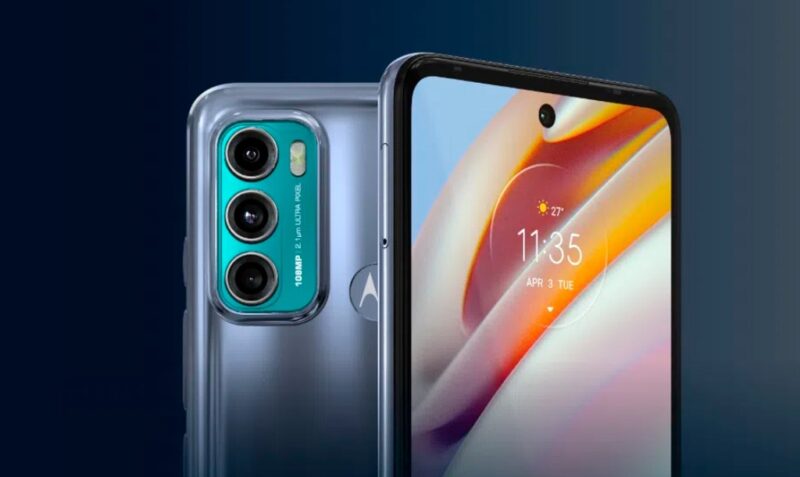
The Moto G60 is our second choice in the list of best phones under Rs 25,000. Motorola has clearly lost its luster after being bought by Lenovo. The company has been in the shadows for a while and has finally lifted the veil on its latest Moto offering, the Moto G60. Before you start your research, no, the company has not released 39 other G-series devices before the Moto G60. The last device in the Moto G series was the Moto G10, which didn’t impress much. The company has already confirmed that it is completely changing the name of the G series. The UTP here is the 108 MP camera on the back of the device. For less than Rs. 20,000 in India, the Moto G60 looks promising, at least on paper, with a 120Hz screen, 108MP camera, Snapdragon 732G SoC, 6000mAh battery, and of course, a stock Android interface. In terms of design, the device has a large and sturdy footprint and weighs about 225 grams. The screen itself is good: Full HD+ resolution, 120Hz refresh rate and HDR10 support. For this price, you can’t ask more from Moto! Oh yeah, there’s a Google Assistant button, a headphone jack, and a Type-C port. As for the internals, the device is powered by a Qualcomm Snapdragon 732G SoC processor. As we already know, the Snapdragon SoC G is for gaming. If you’re wondering about gaming performance, it’s excellent thanks to the built-in Adreno 618 GPU. With 6GB of LPDDR4x RAM combined with 128GB of UFCP memory, overall performance is modest. Now let me talk about the elephant in the room, the optics. The main camera is the Samsung ISOCELL HM2 sensor with 108 MP. The main camera takes excellent photos with good dynamic range, but often has problems focusing. The secondary sensor is an 8MP ultra-wide-angle module with a 119-degree angle of view, while the tertiary sensor is a 2MP depth sensor. Despite the lack of a separate sensor, the camera can take macro photos thanks to the ultra-wide-angle sensor. If I’m not mistaken, we’ve seen a similar implementation on OnePlus devices in the past, and I’d love to see other brands vouch for a similar implementation. The 6000 mAh battery lasts more than a day with moderate to heavy use.
Reasons for purchase :
- 120 Hz refresh rate
- Long life battery
- Stock-like Android experience
- Decent performance.
- Clear sound from the speaker
Reasons to avoid :
- Uneven camera performance
- The lack of a fast charging feature is annoying.
- Large construction and large footprint
- The design is not fresh
Specification:
- OS: Android 11
- Shows: 6.8-inch Full HD+ display (1080×2460), 120Hz refresh rate, HDR10
- Processor: Snapdragon 732G octa-core
- Memory: 4GB / 6GB LPDDR4X RAM
- Storage: 64 GB / 128 GB storage (UFS 2.2), expandable up to 1 TB via microSD
- Rear camera: 108MP rear camera (Samsung HM2 1/1.52″ sensor with 7P lens, f/1.7 aperture) + 8MP ultra-wide sensor (2.5cm macro, f/2.2 aperture) + 2MP depth sensor (f/2.4 aperture).
- Front camera: 32MP with f/2.2 aperture, LED flash
- Communications: Dual 4G VoLTE, Wi-Fi 802.11 ac, VoWiFi, Bluetooth 5, GPS/GLONASS/Beidou, USB Type-C, NFC, 3.5 audio jack.
- Extras : P2i water protection, side fingerprint sensor
- Battery: 6000mAh battery with TurboPower 22W function
Lowest price with a :
3. Xiaomi Mi 10i
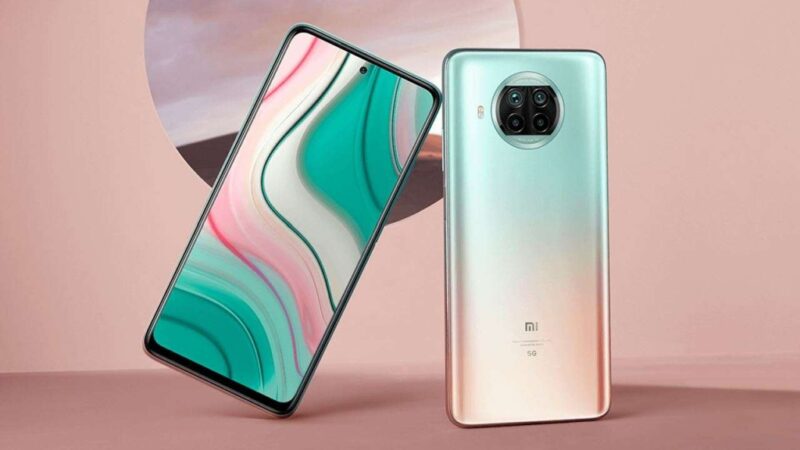
The Xiaomi Mi 10i is one of my favorite smartphones on this list and probably the best device you can buy in this price range. Before I get into all the merits of this unit, I want to point out one thing I didn’t like here. The letter i in Mi 10i stands for India and the device is an Indian exclusive. However, the device is not entirely new as it resembles the Xiaomi Mi 10T Lite in all settings. This device beats all other devices in this price range hands down with its sumptuous features and price/performance ratio. With the release of this smartphone, one thing is clear! Xiaomi wants to be known as a serious high-end device and a reliable alternative to the OnePlus North series. The device meets most of the requirements, but it can be further developed. First, the software and screen are inadequate. Compared to Nord, especially with Oxygen OS on board, Xiaomi’s MIUI is not that good! The phone is powered by a Qualcomm Snapdragon 750G SoC processor, making it one of the most powerful devices in this price segment. The games certainly shine. With a refresh rate of 120 Hz and an Adreno 619 GPU, gaming is an absolute pleasure here. But RAM management is sometimes worse. This is to be expected with MIUI 12 on board. Now let’s talk about cameras. This is the third camera on our list with a 108MP sensor. But this 108 MP sensor is the newest and the smallest. The secondary sensor is 8 MP, which is not very good, but it does the job. The third and fourth sensors are the macro and depth sensors, which as always are not worth discussing. So let’s talk about batteries. The battery capacity of 4,820 mAh is excellent here. While it is partially responsible for the overall heaviness of the device, I love it because it allows you to use your phone all day without having to worry about battery life. MIUI plays no small part in this, as MIUI’s battery optimization is the best in the industry in my opinion.
Reasons for purchase :
- Great design with a wide range of colors and gradients.
- Mid-range price and flagship performance
- The 108MP sensor with MIUI camera optimization shines.
- The battery is hard to run down in one day.
- Stereodynamics is the perfect complement
- 5G support
Reasons to avoid :
- Comes with Android 10
- MIUI 12 is not everyone’s cup of tea
- AMR management sometimes suffers
- The 2 MP macro camera and depth sensors are useless.
Specification:
- OS: Android 10 with MIUI 12
- Show: 6.67-inch Full HD+ 20:9 LCD screen with 1080 × 2400 pixels, 120Hz refresh rate, HDR10+, Corning Gorilla Glass 5
- Processor: Snapdragon 750G octa-core
- Memory: 6GB / 6GB LPDDR4X RAM
- Storage: 64GB / 128GB memory (UFS 2.2) expandable up to 512GB via microSD
- Rear camera: Main lens 108MP (Samsung HM2 1/1.52″ sensor with 7P lens, f/1.75 aperture, LED flash) + 120° ultra wide angle sensor 8MP + depth sensor 2MP + macro sensor 2MP.
- Front camera: 16MP front camera with f/2.45 aperture
- Communications: 5G SA / NSA, Dual 4G VoLTE, Wi-Fi 802.11 ac (2.4GHz + 5GHz) 2 x 2 MIMO, Bluetooth 5.1, GPS (L1+L5), 3.5mm audio jack, USB Type-C
- Extras : IP53 moisture protection, high resolution audio, side mounted fingerprint sensor.
- Battery: 4820 mAh battery with 33W TurboPower function
Lowest price with a :
4. Poco X3 Pro
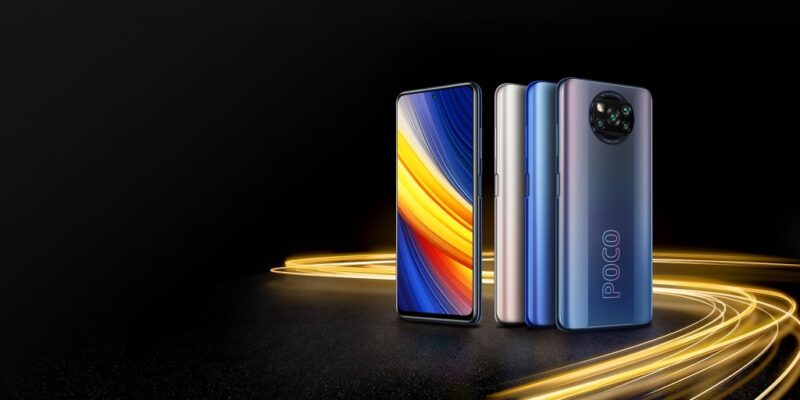
The Poco F1 was the company’s first phone to enjoy huge sales and positive reviews worldwide. Despite its immense popularity, Poco has faced many problems in releasing its next smartphone and has released several rebranded Xiaomi phones over the years. While all Poco phones are popular, they are not popular in the F1 department. Continuing the legacy of the Poco F1, the company has launched the Poco X3 Pro. The device is reportedly the spiritual successor to the Poco F1 and an update to last year’s Poco X3. The Poco X3 Pro may not have an F-badge, but it’s powerful and affordable. For starters, the device runs on a Snapdragon 860, which is obviously a 4G processor, but it performs like no other phone in this segment. Poco has not skimped on corners, and it is safe to say that this is the best the company can do with about Rs 20,000 crore in India. The design itself isn’t new; it’s reminiscent of Poco’s heritage going back generations. I mean, it looks almost exactly like the Poco X3 side by side. Like most devices in this price range, the device features a Full HD IPS LCD screen with a refresh rate of 120 Hz. Yes, AMOLED could be better, but it is what it is. Note that the refresh rate here varies between 30 Hz, 50 Hz, etc. depending on the task. When it comes to SoCs, Poco has gone in a different direction and is ahead of the competition. Despite this, performance is excellent and the integrated Adreno 640 handles games very smoothly. Oh yes, to differentiate the phone from the competition, Poco has included a liquid cooling system that helps the device not overheat and allows gamers to game for a long time. As far as the cameras are concerned, you won’t see fancy numbers here like any other gaming phone. But you do get a quad camera on the back with a 48MP primary camera that can capture good quality images. There’s also an 8MP ultra-wide-angle camera that performs poorly. As usual, Poco has added two unnecessary sensors.
Reasons for purchase
- The Snapdragon 860 outperforms all devices in this price range.
- Large buffer battery.
- Screen refresh rate 120 Hz.
- The IR blaster and 3.5mm headphone jack are a great addition.
- Supports fast charging.
Reasons for avoidance
- MIUI is not to everyone’s taste.
- AMR management sucks.
- Medium-sized secondary rooms.
5. Realme 8 Pro
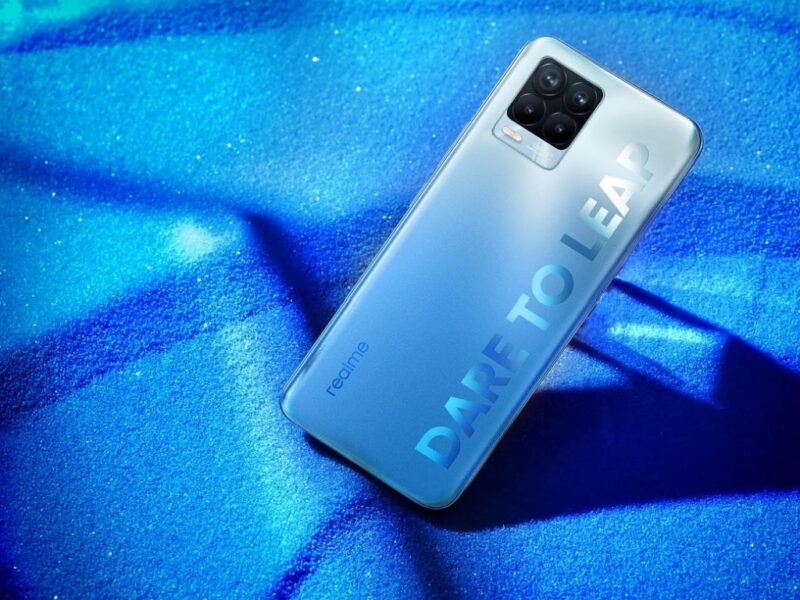
Unlike most brands, Realme focuses on creating a headliner every year in its numbered Pro smartphone series. Of course, Xiaomi’s mid-range looks good too. But the design is not updated with every generation, which makes the device look dull. The Realme 8 Pro is there mostly for its looks, but also because the company is trying to meet the needs of all consumers. The device has a bold style and displays the company’s slogan on the back. Of course, the design is reminiscent of Vivo’s 2024 flagships, coming from BBK and all. Unlike most phones in this price range, the Realme 8 Pro has a Super AMOLED screen with a perforated cutout. To keep the price as low as possible, Realme decided to stick to a refresh rate of 60 Hz. But the screen itself is bright, and the OSIE effect gives a clear picture. Under the hood of the device is a Qualcomm Snapdragon 720G SOC processor coupled with 6 or 8 GB of RAM. As many of you know, the letter G in SoC stands for gaming. This means the game is child’s play. The SoC combined with the Adreno 618 GPU can handle any game without breaking a sweat. In terms of average daily performance, the device is quite capable and does everything smoothly. Realme’s version of Color OS is feature rich, but not to everyone’s taste. But compared to Xiaomi devices, apps can be kept in memory longer. Then there are the cameras. Although the company over advertised the cameras of the Realme 8 Pro, it did not live up to expectations. Don’t get me wrong. The camera is certainly not bad, but it is not the best in its class. The 108-megapixel main sensor features 9-in-1 pixel clustering technology that ensures decent images in sufficient light. We really like the accuracy of the camera’s color reproduction, but the temperature is not good in most cases. The other cameras aren’t necessarily great, but they do the job. Realme’s feature-rich camera app deserves separate praise in my opinion. The battery is not the best on the market, but it will get you through the day without any problems. The device supports 50W fast charging and oddly enough comes with a 65W charger.
Reasons for purchase
- Great performance
- It looks great with the gradients and everything.
- Versatile camera features.
- Fast charging 50W.
- AMOLED screen
- Excellent battery life.
Reasons for avoidance
- Medium-sized secondary rooms.
- The refresh rate of the screen is 60 Hz.
- Unbalanced room temperature
6. Samsung Galaxy F62
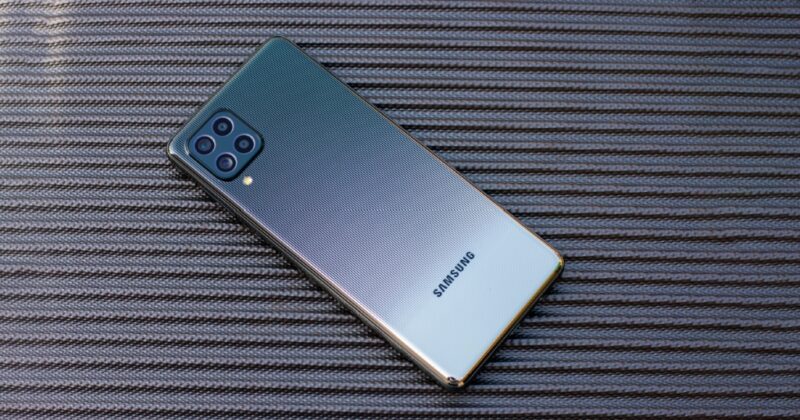
A Samsung device with powerful specifications and a mid-range price is not common. If you are an opponent of Chinese products, but still want a powerful device, then thankfully the Samsung Galaxy F62 is for you. Influential people have many reasons to recommend this device. The device has a huge 7,000mAh battery while maintaining its looks. I mean, the volume is there, but it’s not as extensive as you might think. The least we can say is that the device is beautifully designed. Samsung has, quite appropriately, equipped this device with the company’s beautiful AMOLED screen that dominates the front. Note that the fingerprint sensor is on the side and not in the screen. As for the frame rates, unfortunately there are no fantastic numbers. Coming back to the weight, we note that the device is made of polycarbonate and plastic instead of glass to keep the weight down. Under the hood of the device is the Exynos 9825 SoC processor. Yes, this is the same SoC as the Galaxy Note 10 series. The chipset is paired with a Mali G76 MP12 GPU that handles the graphics functions. As for the games, you don’t have to think twice. Powerful internals coupled with a bright screen and a 7,000 mAh battery – I see no reason to ignore this smartphone. But stay with me, because productivity isn’t everything, right? Now let’s talk about the optics. On paper, the features of the camera look good. With a 64MP IMX682 main sensor, a 12MP ultra zoom and two other auxiliary sensors, the Galaxy F62 is a complete package. But what do these figures mean for actual performance? If there is enough light, the primary and secondary cameras will light up. I think the depth sensor and macro cameras are just there to increase the total number of cameras. I didn’t like the portrait mode here and it differs from other Samsung devices in execution. The background blur or bokeh is too strong and does not look natural. Edge detection is good, but the overall implementation is not credible.
Reasons for purchase
- A huge battery.
- Highly optimized individual user interface
- The AMOLED screen is bright and clear.
- The cameras are good.
Reasons for avoidance
- The One UI on Samsung’s mid-range devices has started showing ads.
- The auxiliary cameras are not so good.
- Slow loading
- There is no 120 Hz refresh rate.
7. Realme X7 5G

The eighth device on our list is again from BBK. The Realme X7, which was unveiled at the same time as the Realme X7 Pro, should be one of the best devices the company has ever released. At a price of $20,000 in India, it offers a lot. For starters, the X7 is powered by a powerful MediaTek Dimensionality 800U SoC, which could be the first device in this category, at least in our country. The SoC supports 5G, and Realme has promised 5G support on both Sims. The good stuff isn’t over yet. The design is not impressive at first glance. Realme has set the bar high in the past for its beautifully designed mid-range phones, and the X7 is clearly an exception to that rule. But for many of you, that doesn’t matter because the phone ends up in your pocket anyway. Oh yes, the company’s Dare to Leap slogan is not repeated on the Realme X7. The X7, unlike many devices in this price range, has an AMOLED screen. But to make it brighter, Realme increased the saturation a bit. Although the device has a fingerprint sensor built into the screen, sometimes it doesn’t work properly. In terms of performance, the MediaTek Dimensity 800U is more or less comparable to the Qualcomm Snapdragon 750G. This means that gaming is very enjoyable thanks to the excellent frame rates and, combined with the bright AMOLED screen, it is simply a gamer’s paradise. The downside is the sound, as the device only has one speaker. Normally I wouldn’t bring it up, but media consumption can be a problem. The Widevine L1 DRM feature is also implemented here, making the device a complete multimedia device. All this is supported by a 4310 mAh battery. This means it can work for a day on a single charge. Realme’s user interface is very well optimized here. But even if you’re jogging, the Realme’s fast charging feature allows you to charge 0-50% in less than 18 minutes. Charging the entire battery can take less than an hour. This is the energy of the day in one hour. A Power Brick is also included and has an output of 65 watts.
Reasons for purchase
- Lightweight and elegant appearance.
- AMOLED screen
- Fingerprint sensor integrated into the screen.
- Good job.
Reasons for avoidance
- No fancy figures on refresh rate.
- Average camera performance.
The phones listed below are the best smartphones under 25,000 rupees in India. There are many different types of smartphones under this price segment. Some are made by flashy brands, some are made by under-the-hood brands, and some are made by unheard of brands that will turn out to be best sellers in the years to come. Some of these phones have high-end specifications where others have low-end specifications. We don’t care about any of this – we have listed the best phones under 25,000 because they are the ones that are good value for money, and as such should be good for your needs.
Frequently Asked Questions
What phone should I buy in 2024?
In a few months, we’ll be able to buy the first 5G smartphones . While the technology hasn’t been widely commercialized yet, the FCC has approved mobile devices that will be equipped with the 5G specification. And as the world shifts to this new technology, there are already some great phones on the market right now that can take advantage of it. Phones have a way of changing. Gone are the days of CDMA, when there was one phone carrier in the whole country. They are now all GSM phones, with 3G networks across the country that are more reliable and faster. The 3G network is a key thing for people who need high speed internet. Now, the biggest thing to look out for is the new model. They are always coming out during the year. Early in the year there are the updates to current models. During the middle, there are the high end flagships. And in the second half of the year, there are the mid-range flagships.
Which is the best phone under 25000 in 2024?
In 2019, the prices of smartphones fell across all price ranges, with the cheapest new phone under Rs. 25k (US$375) now selling for just Rs. 15,000 (US$235). As for the overall functioning of the phone, the curved edges are still a standout. The screen is just as responsive as ever, and the camera produces crisp images with great dynamic range and a wide field of view. No faults in the performance. The only drawbacks we would point out are the average battery life, and the lack of wireless charging. Phones are a part of our everyday lives, and everyone wants the latest and greatest from these devices. But sometimes you don’t want to spend a fortune. And with new releases coming out at a faster pace, prices keep rising. Which one is the best phone under 25000 for you?
Which is the best phone between 20000 to 25000?
It’s been almost one year since the launch of phones like the Galaxy S12 and the Xiaomi Mi 9, and the smartphone industry has been undergoing a lot of changes ever since. The newest phones generally sport better specs and more premium designs. At the same time, these top-of-the-line devices are not exactly cheap: the Galaxy S12+ costs over Rs. 1.5 lakh and the Mi 9 costs around Rs. 1 lakh. We’ve rounded up phones that offer similar performance and power at a significantly lower price in the range of Rs. 20000 to 25000. It has been a tough choice for many of you who have been looking for a new phone. You are a really picky person and want the best possible phone in the market. Well, it’s time to choose your new phone. We are here to help you in choosing the best phones in the market.

